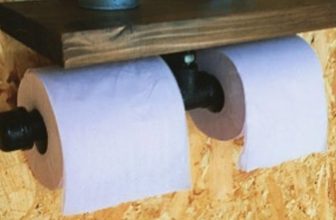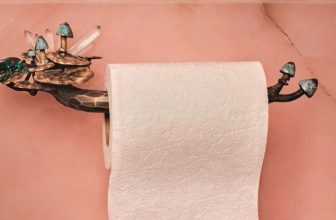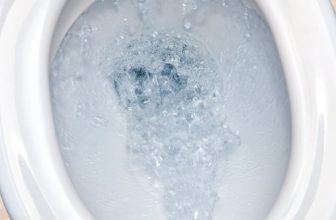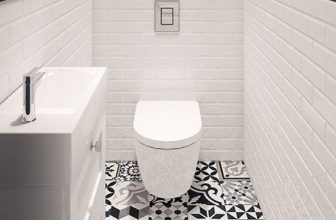Toilet Flange Types – Guide to Sizes and Shapes
A toilet flange is a ring-shaped pipe fitting that connects a toilet to the floor and the sewer line. The flange is hidden under the toilet, but it plays an important role in the proper functioning of the toilet. If the flange is not installed correctly, the toilet will not be able to flush properly.
There are several different types of toilet flanges, and the type that you need will depend on the type of toilet that you have. The most common types of flanges are made from PVC, ABS, or metal. Some toilets also have flanges made from other materials, such as ceramic or porcelain.
The three most common flange types are PVC, ABS, and cast iron. Each type of flange has its own unique benefits and drawbacks.
PVC toilet flanges are the most popular type. They have a very tight seal. Installing a toilet flange of this type is easy. However, they’re not as durable as other types of flanges and can crack if they’re not installed correctly.
ABS toilet flanges are more durable than PVC flanges, but they’re more difficult to install. They also don’t have a very tight seal and can leak if not installed correctly.
Cast iron toilet flanges are the most durable type of flange, but they’re also the most difficult to install. They have a very tight seal and are unlikely to leak, but they’re very heavy and can be difficult to move around.
When choosing a flange, you will also need to consider the size. Toilet flanges come in a variety of sizes, and the size that you need will depend on the size of your toilet. Most toilets use a standard size flange, but some toilets, such as those with large water tanks, may require a larger flange.
This article will tell you about the different types of flanges.
What is a Toilet Flange?
A toilet flange is a vital part of any toilet installation. It lies at the base of the toilet bowl and attaches the bowl to the floor. The flange also connects the bowl to the drainpipe.
Toilet flanges can be made from a variety of materials, including PVC, rubber, metal, or a combination of these materials. They typically have a cylindrical shape and a flat surface. The flat surface of the flange has space for a wax ring and a section where bolts or screws can be tightened.
The main purpose of the toilet flange is to prevent water leaks and to prevent damage to the floor during the installation of the toilet.
It is very important to choose the correct height of the toilet flange when installing it.
Sizes of Toilet Flanges
There are several sizes of flanges for toilets, but the most common are 4×3 flanges. Odd-size flanges are also available, but they are less common.
The following are different sizes of toilet flanges.
Standard 4×3 flanges
The Standard 4×3 flange is the most common size for toilet connections. The top of the flange is four inches wide, while the bottom has only three inches in diameter.
The top of the flange connects to the toilet, and the bottom element fits the outlet drain.
This size is ideal for most toilets, although there may be some slight variations depending on the model.
Push-tite flanges
If you’re searching for an efficient and reliable way to join two pieces of pipe together, look no further than push-tite flanges. These products are easy to install, as all you need to do is press them against the floor to get a secure connection.
In addition, push-tite flanges come with gaskets that fit inside pipes, making them ideal for use with heavy piping.
Best of all, push-tite flanges are designed to resist extreme conditions, such as heat, cleaning chemicals, and moisture.
Odd-sized flanges
Odd-sized flanges are flanges that do not fit the standard sizes of pipes. These flanges must be fitted with an extension kit in order to be used in a standard piping system. Without the extension kit, the flange will not fit properly and the toilet will not function correctly.
Three-inch flanges
Three-inch flanges are one of the popular flange sizes used in plumbing. They have a diameter that is the same up and down, which makes them easy to install. However, three-inch flanges will only work properly if your plumbing system can support their exact dimensions.
Four-inch flanges are also available, but they are much less common. Four-inch flanges require wider drain pipes, so it is unlikely that they would be used in a modern bathroom.
Toilet Flange Shapes
There are three shapes of toilet flanges: regular flanges, deep seal flanges, and offset flanges.
Regular flanges are the most common type of flange and are often used with standard toilets.
Deep seal flanges are used with toilets that have a deeper bowl, such as ADA-compliant toilets.
Offset flanges are typically used when the drain pipe is offset from the center of the toilet.
Toilet Flange Materials
There are six types of toilet flanges based on the material they are made of. They are PVC, ABS, brass, copper, stainless steel, and cast iron. PVC and ABS are the most common materials for toilet flanges. Brass, copper, stainless steel, and cast iron are more durable and sturdier, but they are also more expensive.
PVC toilet flanges
PVC flanges for PVC pipe for toilets have many advantages which make them a popular choice for use in many different settings.
One advantage is that they are lightweight and very affordable.
Another advantage is that they are durable and easy to install. They are also rust-resistant and waterproof.
The only disadvantage of PVC toilet flanges is that they require a perfect installation setting in order to work properly. If your bathroom flooring is uneven, the plastic flange can break.
But there is a solution: you can use an ABS plastic flange. This model is even lighter and stronger, meaning that it is also more expensive.
ABS plastic flange
ABS plastic is a strong, durable material that is often used in the manufacturing of toilet flanges. This type of plastic is often chosen for its resistance to chemicals and its ability to withstand high temperatures.
ABS plastic toilet flanges are a great choice for any home or business owner who is looking for a reliable and long-lasting product.
Brass toilet flanges
Brass toilet flanges are a type of flange that is commonly used in bathrooms.
Brass is a material that is known for its strength and durability, as well as its ability to withstand heat.
Brass flanges are also resistant to oxidation, which makes them a good choice for use in damp or moist environments.
Copper toilet flanges
If you’re looking for a classic toilet flange that is both durable and resistant to corrosion, then a copper flange is a great option.
Copper flanges are available in both soft and rigid varieties, with the latter requiring an elbow-shaped joint to be attached to the toilet outlet.
Copper is also known for its ability to fend off fungi, viruses, and bacteria, making it a great choice for a bathroom element.
Stainless steel toilet flanges
This type of flange is made from a strong, durable stainless steel material that is resistant to rust and corrosion, making it an ideal choice for use in wet or damp environments.
The flange is installed between the toilet and the drain pipe, and it creates a tight seal that prevents sewage and other waste materials from leaking out.
Stainless steel toilet flanges are available in a variety of sizes and styles to fit any toilet or drain pipe.
Toilet Flange Tile Guide
This product is designed to help install bathroom tile around the toilet drain flange.
It provides straight edges for tile cutting instead of rough tile nipping for fitting round flange. The label card works as a debris and odor shield during the completion of bathroom installation.
It also helps protect the sub-floor around the flange from future water damage and rot.
This product is for 1/4 in. to 3/8 in. tile and is stackable for thicker tile installations.
FAQ
How to choose a toilet flange?
When choosing a toilet flange, you will want to consider the following:
- The size of the flange. The flange should be the same size as the drain pipe.
- The material of the flange. The flange should be made of a durable material that will not rust or corrode.
- The installation. The flange should be easy to install and should come with all the necessary hardware.
Is it possible to install a lead toilet flange?
Lead flanges are not commonly used in new construction, but they may be present in older homes. If you need to install a lead flange, you will need to purchase a flange kit that includes a lead ring and a lead sleeve. The installation process is similar to that of a standard flange, but you will need to take extra care not to damage the lead components.
What is the standard size of a toilet flange?
There are a few different sizes of toilet flange, but the most common and readily available size is the 4 x 3-inch size.
This pipe is 4 inches wide at the top, and 3 inches wide at the bottom. The 3-inch bottom is the size to fit a standard 40 pipe, which is most commonly used in home drains.
Bottom Line
There are different types of toilet flanges, but the most popular ones are round and 4×3 inches in diameter. If you need to replace an old toilet flange, be sure to check the dimensions, shape, and material to get the same part. If you are not sure which type of flange you need, you can always ask a sales associate for help.
If you have questions, ask them in the comments.






